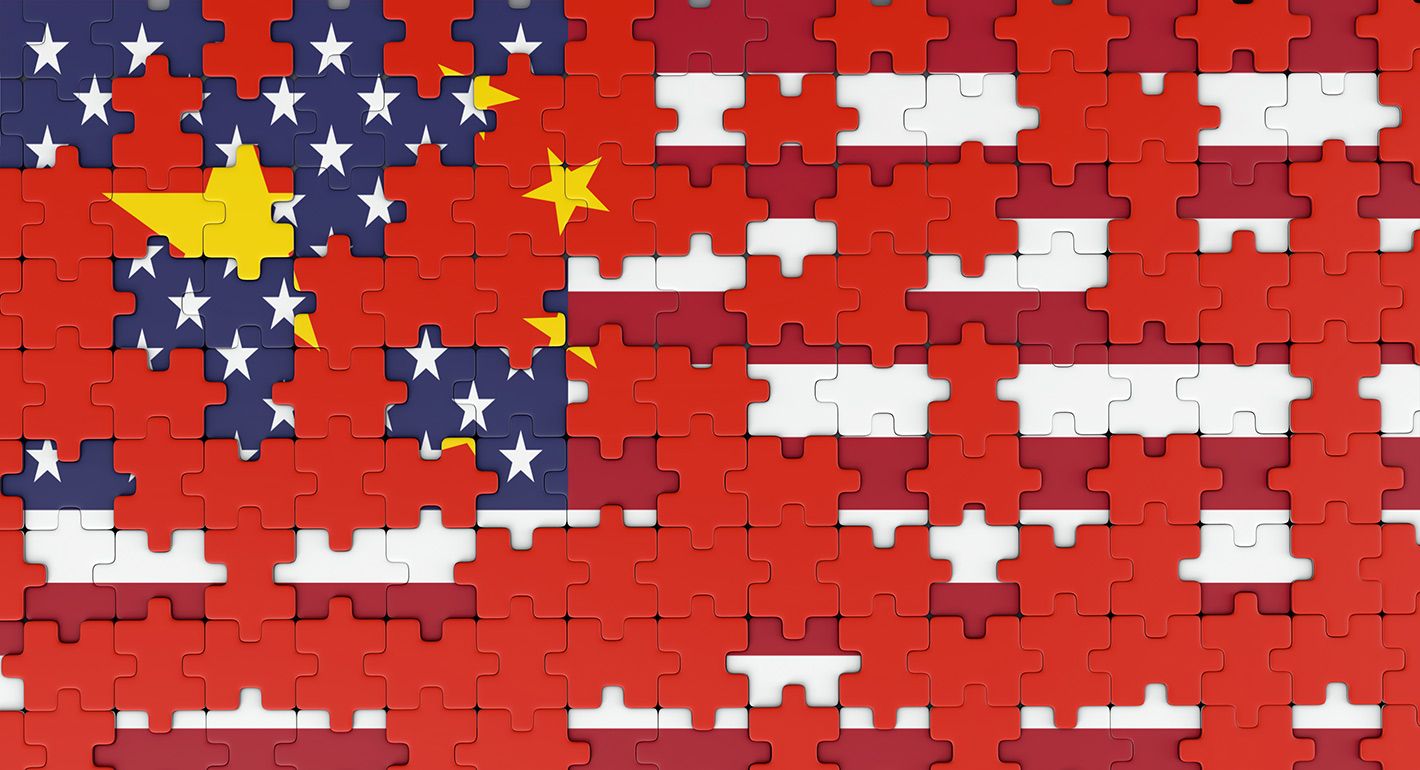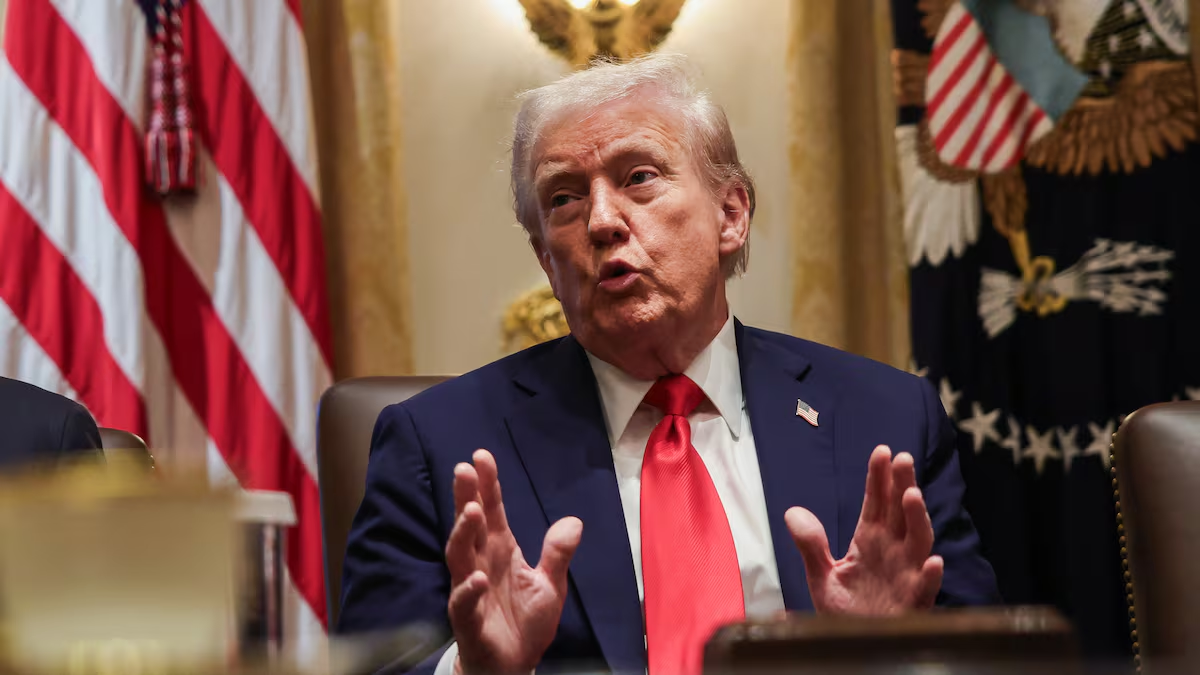China has joined the negotiation table — but the struggle between Washington and Beijing is far from finished. Throughout this trade war, China’s open defiance in the face of President Donald Trump’s tariffs has become symbolic of its resistance.
It even gave rise to viral memes showing Trump impatiently waiting for a call from the Chinese leader.
“We will not yield,” became a daily refrain from China’s Ministry of Foreign Affairs. As tariffs rose and rhetoric intensified in Washington, Beijing remained firm in its stance.
Even as Chinese officials traveled to Switzerland for high-level meetings, a state-run social account mocked the U.S. with a cartoon of the Treasury secretary pushing an empty cart.
There was also confusion over which side actually proposed the Geneva meetings.
Yet after two days of what were described as “robust” discussions, the dynamic appears to have shifted.
Is this a pivotal moment in U.S.-China relations? The answer is complex — both yes and no.
Faisal Islam: U.S. and China ease away from the edge
‘We don’t care’: China’s defiance endures beyond Trump’s term
“We both want to avoid full economic separation,” said U.S. Treasury Secretary Scott Bessent at a news briefing in Geneva.
“These extreme tariffs functioned as a form of embargo. Neither side wants that outcome. Trade is what we want.” Many analysts were surprised by the depth of the agreement.
“I expected the reductions to be closer to 50%,” said Zhiwei Zhang, chief economist at Pinpoint Asset Management in Hong Kong, in comments to Reuters.
Instead, U.S. duties on Chinese goods will fall to 30%, and Chinese tariffs on U.S. products will be reduced to 10%.
“This is clearly very encouraging news for both domestic economies and the global outlook,” Zhang added, “and it helps calm fears of serious damage to global supply chains in the near term.”
President Trump celebrated the development on Truth Social: “Many issues discussed, many agreements reached. A full reset achieved in a friendly but productive environment.”
Beijing has also changed its tone significantly — and likely not without reason.
While China can endure some level of economic confrontation with the U.S., its policymakers are growing increasingly worried. The country remains the primary trading partner for more than 100 nations.
Yet its economy is facing intense pressure from a major property downturn, persistently high youth unemployment, and weakening consumer sentiment.
Industrial production has slowed noticeably, and there are signs some manufacturers are laying off workers as U.S.-bound output grinds to a stop, freezing trade in the process.
Saturday’s data revealed that China’s consumer price index declined by 0.1% in April, marking a third straight monthly drop as households cut spending and businesses slash prices to remain competitive.
On Monday, the Chinese Ministry of Commerce declared the agreement a key milestone to “narrow differences” and to “establish a basis for deeper cooperation.”
Just a few weeks ago, such an optimistic public stance from Beijing would have seemed unthinkable.
Both countries also committed to holding further negotiations — what China described as an “economic and trade consultation mechanism.”
Still, Trump’s “total reset” characterization may be premature, as Beijing’s official statement included a pointed caveat.
“We hope the U.S. will continue engaging with China in good faith, meet us halfway, and correct the mistake of one-sided tariff hikes,” a ministry spokesperson said.
China’s state media also issued a veiled warning. A Xinhua News Agency commentary stated that China’s “patience and goodwill are not limitless, and they will not be extended to those who pressure, threaten, or renege without hesitation.”
Chinese leadership is determined to project strength both domestically and globally. They want to show that they’ve stood firm, not compromised. China’s messaging emphasizes rational action aimed at avoiding global economic turmoil.
Xi’s true test lies beyond this trade war
“This is a win for pragmatism and reason,” said Zhang Yun from Nanjing University’s School of International Relations.
“These talks created a workable framework for sustained negotiations in the future.”
But this “win” has an expiration date. The tariff pause lasts just 90 days to allow time for more talks.
It may reopen limited trade channels and bring some calm to jittery markets.
Still, the underlying tensions remain. China continues to export far more to the U.S. than it imports. And the path forward is cluttered with difficult issues — from state subsidies to high-tech industries to geopolitical disputes over Taiwan and beyond.
The conflict over a more equitable trade balance isn’t over. It has simply evolved.
The new battleground lies not in factories or store aisles, but in conference rooms across Beijing and Washington.



